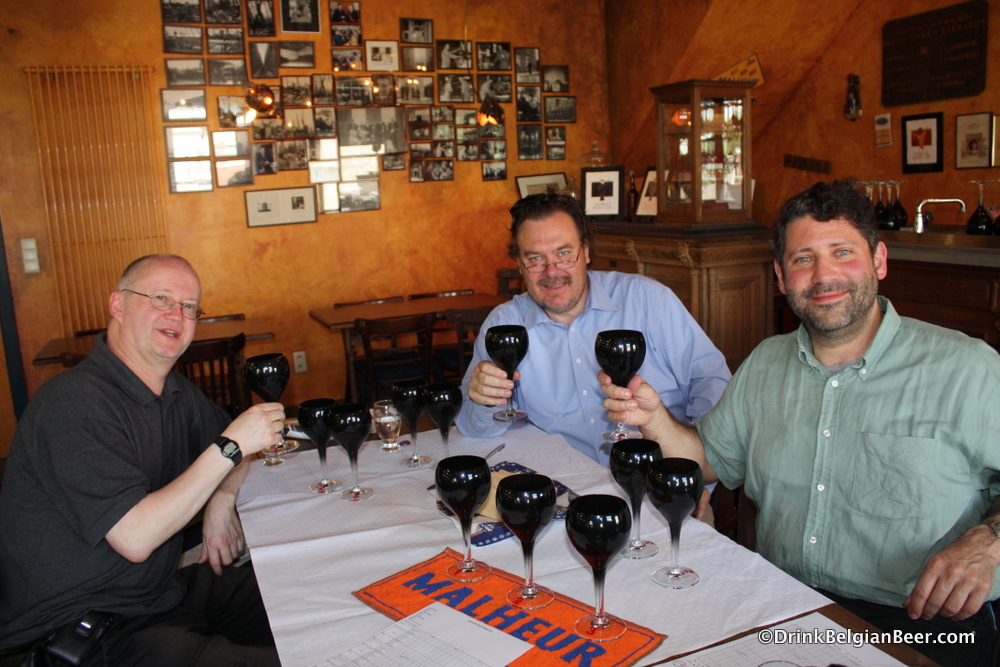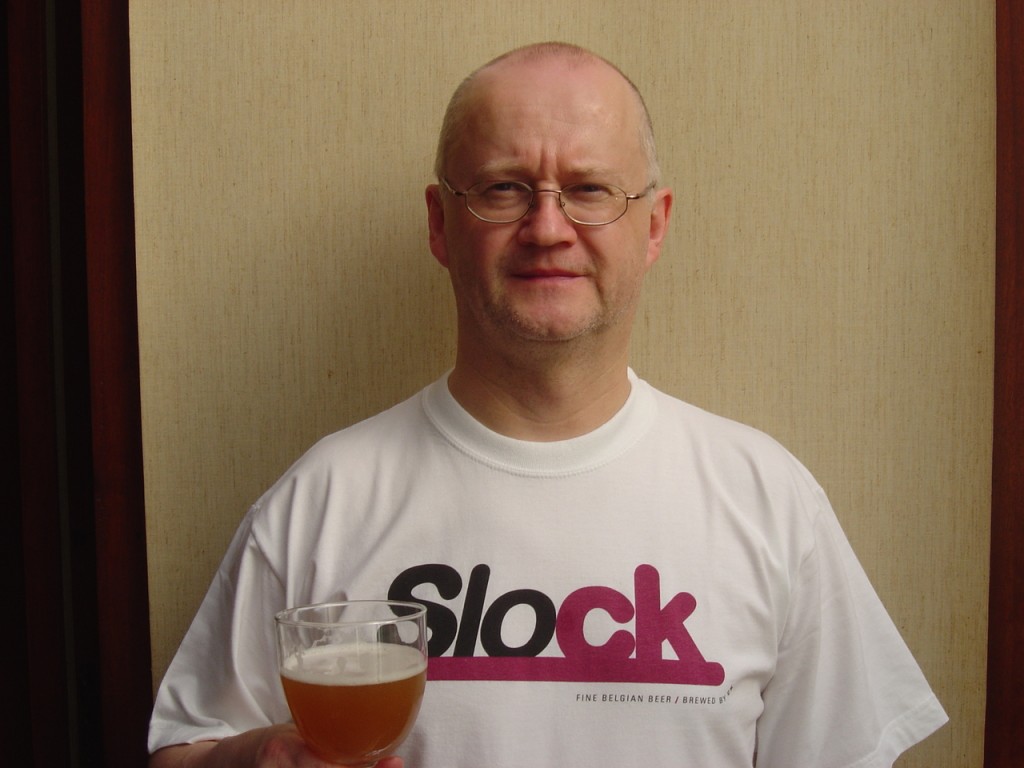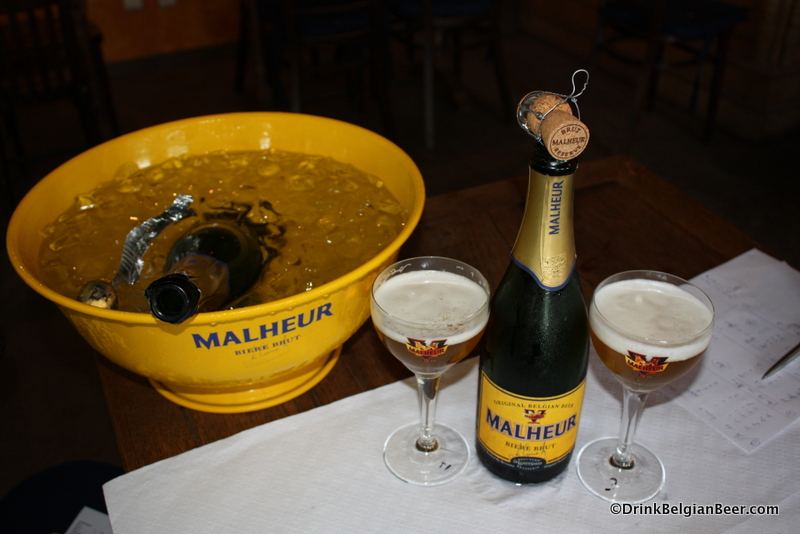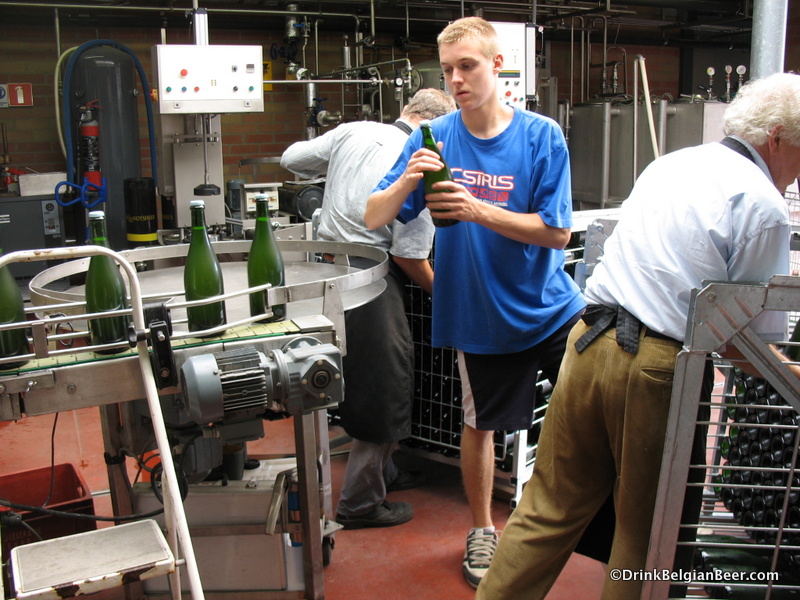Today, I welcome Carl Kins as a guest contributor to the site. Carl is very well known in beer circles in his native Belgium, as well as all over Europe and the U.S.A. He is a member of Zythos, The European Beer Consumer’s Union (E.B.C.U.), and other beer associations and groups. He is an International Beer Judge, and has judged at the Brussels Beer Challenge, The Craft Brewer’s Conference, The Great American Beer Festival, Birra dell’ Anno, the International Beer Challenge, and Villaggio Della Birra.

Carl has written for such publications as Ale Street News, Beer Connoisseur Magazine, and De Zytholoog. He makes Kortrijk, West Flanders, his home. He has a beer called SloCK brewed at De Graal to his recipe. It’s a blond, hoppy ale with about 60 ibu and 6.5% abv, brewed with Duvel yeast. Seek if out if you are in Belgium.
You can read Carl’s full bio at the end of this article.

Carl’s first piece is on Belgium’s Brut beers. I’ll chime in and say I will call it like I see it, as the producers cannot, due to EU regulations: they are “Champagne-style” in much of their method of production and their carbonation, which is usually very lively.

I have visited Bosteels, Malheur (De Landtsheer), Oud Beersel, and Den Triest myself, so I know how good these breweries-and their beers-are. Note that all the photos with the article that have the “DrinkBelgianBeer.com” copyright were taken by me, Charles (Chuck) Cook.

Now, Carl’s piece:
The festive season, time for “champagne beers”
1. History
In 2001 two Belgian breweries, located in the same village of Buggenhout (Province of East-Flanders), Malheur and Bosteels, started to develop beer according to the méthode champenoise” virtually at the same time. That cannot be considered a coincidence. The story goes that the idea was launched by Michael Jackson during his visit to both breweries at the turn of the century. But both Malheur and Bosteels say no to this. Both also launched their beers on the market virtually simultaneously, starting a fight over who was first, which has not been settled yet.
Let me talk about the production method, before talking about these and other breweries and their beers.

2. Production
The production of such beers follows a number of phases. As you will see, there are many more phases when compared to an ordinary beer, making it difficult to brew because many things can go wrong. Herewith a generic description of the various phases, not taking into consideration the specific processes of each brewery.
Phase one: brewing
As with every beer, it all starts with the brewing. Sometimes the beer is filtered before going to the next phase, but this is not always the case.
Phase two: second fermentation in the bottle
For re-fermentation, sufficient sugar is added to the bottle to achieve higher alcohol and high pressure in the (strong) bottles, needed further in the process. Normally, a “bidule”, i.e. a small plastic thimble is placed in the neck of the bottle. The bottles are closed with a crown cap.
The re-fermentation normally takes at least two to three months but can go up to one year to complete, depending on the temperature at which the bottles are stored. The bottles are kept horizontally during that time such that the yeast deposit sticks to the long side of the bottle. This additional fermentation can add up to 1 to 3 percent ABV.
Phase three: “remuage”, the riddling or turning the bottles
Once the re-fermentation is finished, the yeast sediment (the lees) has to be removed. This process starts with placing the bottles in special racks (gyropallettes, i.e. a mechanized riddling equipment), holding the bottles at a 45° (or more) angle, with the crown cap pointed down. On a regular basis, the bottles are given a slight shake and turn, alternatively on right then left. The angle is gradually increased, ensuring the sediments are flowing towards the “bidule” in the neck of the bottle.
Phase four: freezing and disgorging
The yeast removal process is called disgorging (dégorgement in French). It starts with freezing a small amount of the liquid in the neck. Then the crown cap is removed releasing this plug of ice containing the yeast that has built up in the “bidule” in the bottle neck. At the same time one has to avoid the loss of much of the liquid.
Phase five: addition and finalization
The removal of the plug of ice has reduced the amount of liquid in the bottle. Therefore the liquid level is topped up with young beer, containing sufficient sugar.
A cork is then inserted, with a wire cage securing it in place.
Phase six: lagering and labelling
After all this, the beer is shaken vigorously, and is allowed some time to settle, before being labeled and sold.
All this clearly shows that making such a beer takes much more time than an ordinary beer, leading to higher prices.


Leave a Reply